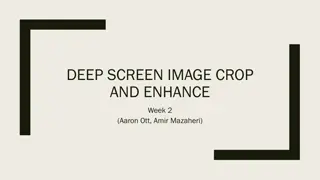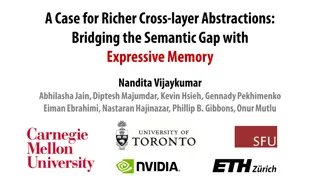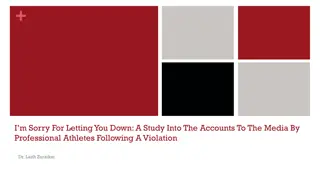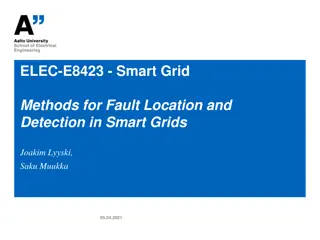
Radiographic Imaging Characteristics and Factors
Explore the fundamental characteristics and grids in radiographic imaging, including radiographic density, contrast, speed, film latitude, noise, and blurring. Learn about base fog, exposure factors, subject thickness impact, and more to enhance your understanding of radiographic imaging processes.
Download Presentation

Please find below an Image/Link to download the presentation.
The content on the website is provided AS IS for your information and personal use only. It may not be sold, licensed, or shared on other websites without obtaining consent from the author. If you encounter any issues during the download, it is possible that the publisher has removed the file from their server.
You are allowed to download the files provided on this website for personal or commercial use, subject to the condition that they are used lawfully. All files are the property of their respective owners.
The content on the website is provided AS IS for your information and personal use only. It may not be sold, licensed, or shared on other websites without obtaining consent from the author.
E N D
Presentation Transcript
Image characteristics and grids
Image characteristics Radiographic density Radiographic contrast Radiographic speed Film latitude Radiographic noise Radiographic blurring
Radiographic Density The overall degree of darkening of an exposed film is r/g density It can be measured as the optical density of an area of an x ray film, Optical density = Log10 I0/I1 I0 is the intensity of incident light I1 is intensity of light transmitted through the film Measurement of film density also is a measure of opacity of the film
Characteristic curve A plot of the relationship b/w film optical density of film and the log of the corresponding exposure As exposure of film increases, optical density also increases A film is of diagnostic value, when structures of interest are imaged on relatively straight portion of graph, b/w 0.6 and 3 optical density values
Base plus fog An unexposed film when processed, shows some density This is caused by the inherent density of the base and added tint and the development of unexposed silver halide crystals This minimal density is called gross fog The optimal density of gross fog typically is 0.2 to 0.3 r/d density is influenced by exposure and thickness and density of subject
Exposure Overall film density depends on no of photons absorbed by film emulsion Increase in mA, kVp, or exposure time increases the no of photons reaching the fil and thus increases the density of r/g Reducing the distance b/w focal spot and film also increases film density
Subject thickness The thicker the subject, the more the beam is attenuated and the lighter the r/g If exposure factors intended for adults are used for children or edentulous pt, the r/g will appear dark, coz of smaller amount of absorbing tissue in the path
Subject density The greater the density of a structure within the subject, the greater the attenuation of the x ray beam directed through that subject or area The relative densities, in decreasing order Enamel Dentin Cementum Bone Muscle Fat air
Metallic objects are far denser and hence better absorbers Coz the x ray beam attenuates differently, the resulting r/g has light and dark areas Dense objects cause image to be light and are said to be radiopaque Objects with low density are weak absorbers and allow most photons to pass through and cast dark areas on film, called radiolucency
Radiographic contrast Describes the range od densities on a radiograph It is defined as difference in densities b/w light and dark regions on a r/g Thus an image which shows both light and dark areas has high contrast / short gray scale of contrast A r/g composed only of light gray and dark gray zones has low contrast / long gray scale of contrast r/g contrast is the result of subject contrast, film contrast and scattered radiation
Subject contrast It is the range of characteristics of the subject that influences r/g contrast It is influened largely by subjects thickness, density and atomic no The subject contrast of a pts head and neck exposed in a lat ceph view is high The dense regions of bone and teeth absorb most of the radiation, whereas less dense soft tissue facial profile transmits most of the radiation
Subject contrast also is influenced by beam energy and intensity As the kVp of x ray beam increases, the subject contrast decreases Subtle changes in mA may also slightly change subject contrast by changing the location of the r/g ed structures on the characteristic curve
Film contrast Describes the capacity of r/g films to display differences in subject contrast A high contrast film reveals areas of small difference in subject contrast more clearly It is measured by the average slope of useful portion on curve The greater the slope of curve in this region, the greater the film contrast When the slope of curve in the useful range is greater than 1, the film exaggerates film contrast
Films used with intensifying screens show a slope in the range of 2 to 3 Properly exposed films have more contrast than do underexposed films Film contrast is maximised by optimal film processing conditions Incomplete or excessive development diminishes contrast Improper handling of film, such as storage at too high temperature, exposure to excessively bright safe lights or light leaks in dark room degrades contrast
Scattered radiation Scattered radiations results from photons that have interacted with the subject by comptom or coherent interactions These interactions cause the emission of photons that travel in directions other than that of primary beam, consequently causing fogging and loss of contrast
Best means of reducing scattered radiation: Use a relatively low kVp Collimate the beam to the size of film to prevent scatter from an area outside the region of image Use of grids in extra oral radiography
Radiographic speed Refers to the amount of radiation required to produce an image of standard density It is frequently expressed as the reciprocal of exposure required to produce an optical density of 1 above gross fog a fast film requires a relatively low exposure to produce a density of 1 Slow film requires a long exposure Film speed is controlled by size of silver halide grains and their silver content
F speed film is faster than D speed film because tabular crystal grains are used in emulsion of F speed film Film speed can be increased slightly by processing the film at a higher temperature, but is achieved at the expense of fog and graininess Processing in depleted solutions can reduce speed Always preferrable to use fresh processing solutions and follow recommended processing time and temperature
Film latitude Is a measure of the range of exposures that can be recorded as distinguisable densities on a film A film with characteristic curve that has a long straight line portion and a shallow slope has a wide latitude Films with wide latitude have lower contrast Wide latitude films are useful when both osseous structures and soft tissue must be recorded
Radiographic noise Is the appearance of uneven density of a uniformly exposed r/g film It is seen on a small area of film as localized variations in density Primary causes are: Radiographic mottle Radiographic artifact
Radiographaic mottle: is uneven density resulting from physical structure of film or intensifying screens Radiographic artifacts: are defects caused by errors in film handling, such as fingerprints or bends in the film, or errors in film processing such as splashing developer or fixer on a film or marks or scratches from rough handling
Mottle may be seen as film graininess, which is caused by visibility of silver grains in the film emulsion, specially when magnification is used It is evident when high temperature processing is used It is also evident when film is used with fast screens
Two important causes of the phenomenon are: Quantum mottle: caused by fluctuation in the number of photons per unit of the beam cross sectional area absorbed by the intensifying screen It is most evident when fast film screen combination is used coz here the relative non uniformity of beam is highest Screen structure mottle: is graniness caused by screen phosphors. It is evident when fast screens with large crystals are used
Radiographic blurring Sharpness: is the ability of the radiograph to define an edge precisely Resolution: or resolving power is ability of the radiograph to record separate structures that are close together
It is measured by radiographing an object made up of a series of thin lead strips with alternating radiolucent spaces of the same thickness Groups of lines and spaces are arranged in order of increasing numbers per mm Resolving power is measured as the highest no of line pairs per mm that can be distinguished on r/g with low power magnification Panoramic view can distinguish 5 line pairs/mm IOPA can delineate 20 line pairs/mm
Radiographic blurring It is caused by Image receptor blurring (film and screen) Motion blurring Geometric blurring
Image receptor blurring Size and number of silver grains in emulsion determines sharpness Finer the grain, finer the sharpness Slow speed film have fine grains and faster films have larger grains In intensifying screens, visible light and UV light emitted by screen spread out beyond the point of origin and expose a film area larger than the phosphor crystal Spreading light causes a blurring of fine detail on r/g
screens with larger crystals are relatively fast and gives diminished sharpness Fast screens have relatively thick phosphor layer, which contributes to dispersion of light and diminished sharpness Diffusion of light from a screen can be minimized and image sharpness maximized by ensuring close contact b/w screen and film
Parallax Presence of image on both side of a double emulsion film causes loss of image sharpness It results from apparent change in position or size of a subject when viewed from different perspective In intraoral images, it is most apparent on wet films, here the emulsion is swollen with water and loss of sharpness by parallax is seen In screens, light from one screen may cross the film base and reach the emulsion on other side, this is solved by incorporating dyes into the base that absorb the light emitted by the screens
Motion blurring Movement of the film, subject or x ray source causes loss sharpness Movement of x ray source enlarges the focal spot and diminishes sharpness Pt movement can be minimized by stabilizng the pts head with headrest during exposure Use of higher mA and kVp and correspondingly shorter exposure times resolve this problem
Geometric blurring Larger the focal spot, greater the loss of image sharpness Image shapness is improved by increasing the distance b/w the focal spot and object and reducing the distance b/w object and image receptor
Grids The function of the grid is to reduce the amount of scattered radiation exiting a subject that reaches a film It is placed b/w subject and the film, preferentially removes the scattered radiation and spares primary photons This reduces nonimaging exposure and increases subject contrast
Composition A grid is composed of alternating strips of radiopaque material and strips of radiolucent material When scattered photons generated in subject are scattered toward film, they are usually absorbed by radiopaque material in the grid This is because the direction of scattered photons deviates from that of primary beam and can not pass through parallel plates of grid
Focussed grids are used most often In this, r opaque strips are all directed toward a common point, focal spot of x ray tube Coz the strips are angled toward the focal spot, their direction coincides with the paths of divering photons in the primary beam Lead strips absorb the scattered photons as their paths diverge from those of the primary photons
Grids are manufactured with varying numbers of line pairs of absorbers and r lucent spaces per inch Grids with 80 or more line pairs / inch do not show objectionable grid lines on the image Grid ratio: ratio of grid thickness to the width of radiolucent spacer The higher the grid ratio, the more effectively the scattered radiation is removed Grids with a ratio 8 or 10 are preferred
Image of radiolucent grid lines on the film can be deleted by moving the grid perpendicular to the direction of grid lines during exposure This causes blurring out of r lucent lines and allows a more uniform exposure The apparatus or moving a grid is called Bucky To compensate for absorbing materials, exposure required is approximately double that when a grid is not used






















